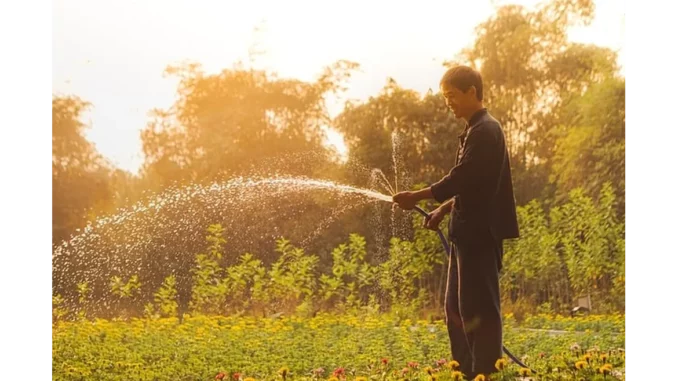
Creating a small flower garden can be both a challenging and rewarding endeavour, especially when space is at a premium. To gain some insider knowledge and valuable tips, I recently spoke with Sarah Thompson, a seasoned horticulturist known for her expertise in transforming modest plots into vibrant, blossoming sanctuaries. Our conversation was enlightening, as Sarah shared her wealth of experience on how to maximise a limited garden space effectively. Here’s what I learned from our delightful exchange.
Turn your garden into your private retreat, enjoyable day or night complements of Elegancia.homes.
Sarah began by emphasising the importance of vertical space, which, she explained, is often overlooked in small garden designs. “When you’re working with limited ground area, it’s crucial to think upwards,” she said with a knowing smile. “Incorporating vertical elements like trellises, hanging baskets, and wall-mounted planters can significantly enhance your garden’s aesthetic and functional appeal.”
She recommended using trellises to support climbing plants such as clematis or sweet peas, which can add a splash of colour and fragrance without encroaching on valuable ground space. “Climbing roses are another beautiful option,” she added. “They can create a stunning backdrop against a fence or wall, drawing the eye upwards and making the garden feel more spacious.”
Sarah also highlighted the advantage of using hanging baskets for trailing plants like fuchsias and petunias. “These not only add layers to your garden but also allow you to experiment with textures and colours at different heights,” she explained. “It’s a simple yet effective way to create visual interest.”
A cohesive colour palette, Sarah pointed out, is another key element in designing a small garden. “Choosing a unified palette can make a garden feel more harmonious and, surprisingly, larger,” she noted. “It’s about creating a sense of flow and continuity.” She suggested starting with a limited range of hues—perhaps two or three complementary shades—and integrating them throughout the garden. “This doesn’t mean you can’t be bold,” Sarah assured me, “but keeping a consistent colour theme will help tie everything together beautifully.”
Incorporating diverse plant heights is also critical, Sarah advised. “A variety of heights adds depth and dimension to your garden,” she explained. “It’s like painting with plants—you want that layered effect to create a sense of richness and fullness.” She recommended using taller plants like delphiniums or foxgloves towards the back of the garden or along the borders, while medium-sized plants like lavender or coreopsis can fill the middle ground. “For the front, consider low-growing plants such as alyssum or creeping thyme,” she added. “This tiered approach not only maximises space but also ensures every plant has its moment to shine.”
Sarah was keen to stress the importance of planning before planting. “Sketch out your ideas first,” she suggested. “Think about where the sun hits your garden at different times of the day and choose plants that will thrive in those conditions.” Her advice was to consider the microclimates within the garden, as even small spaces can have areas of full sun, partial shade, and full shade. “It’s all about right plant, right place,” she said knowingly.
Another tip Sarah shared was the use of containers to add versatility to small gardens. “Containers are brilliant because they can be moved around to suit the season or your mood,” she enthused. “They’re perfect for experimenting with different plant combinations, and they give you the flexibility to change things up without a complete garden overhaul.”
Throughout our conversation, Sarah’s passion for gardening was evident, as was her insistence on sustainability. She encouraged using organic methods and native plants, which are often more resilient and beneficial to the local ecosystem. “Native plants are adapted to your local climate and soil conditions, making them easier to maintain and more likely to thrive,” she explained.
As we wrapped up our chat, Sarah left me with a final piece of advice for budding gardeners: “Be patient and enjoy the process. Gardens are ever-evolving, and that’s part of their beauty. Don’t be afraid to experiment and learn as you go.”
With Sarah’s insightful tips, designing a small flower garden seems not only achievable but also an exciting creative venture. Her approach combines practicality with an artistic flair, encouraging gardeners to make the most of their space while crafting a personal oasis of beauty and tranquillity.
For anyone looking to embark on their own small garden journey, Sarah’s advice offers a valuable starting point. By focusing on vertical space, maintaining a cohesive colour palette, and incorporating diverse plant heights, one can transform even the smallest of spaces into a lush, inviting retreat.
Diana Tahjmir


Be the first to comment